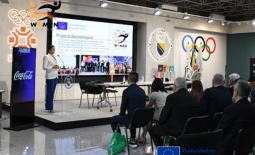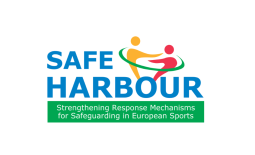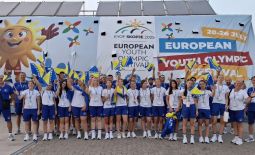SAFE HARBOUR project celebrates its first six months of implementation
June 2025 marks the completion of the first six months of the SAFE HARBOUR project. Six months during which the consortium has already achieved significant progress across several key areas.
From the official launch of the project and its media channels, regular consortium and expert exchanges to the delivery of the first approved deliverable, the consortium demonstrates a shared commitment to constructive exchanges, open communication and positive cooperation to jointly strengthening safeguarding mechanisms in European sport. The project officially started in January 2025 with the first in-person meeting held in Brussels (Belgium) on 28 - 29 January 2025.
This meeting provided a valuable opportunity for partners to meet face to face, align on project objectives, and begin collective reflection on safeguarding challenges in sport. Since then, experts exchanges and Monthly Consortium Meetings have been held regularly, allowing partners to stay aligned, clarify roles and responsibilities, track progress, and ensure continuous contribution and shared coordination throughout the implementation of the project. Structured in three phases, the SAFE HARBOUR project begins by identifying gaps, key stakeholders, and patterns of safeguarding violations. It will then move towards the codevelopment of a European Response framework – a shared advisory tool aligned with the IOC’s global safeguarding standards but adapted to Europe’s legal and institutional context. In the final phase, each NOC will translate the framework into a tailored national strategy and deliver training to their leadership and National Federations. The project is currently in its first phase. The consortium is advancing three key activities in parallel: a GAP questionnaire was launched to identify both good practices and existing gaps in the procedures and systems of European NOCs and Federations for responding to safeguarding concerns and violations. The responses are currently being analysed and will inform a comprehensive GAP report. This analysis also complements the ongoing mapping of key stakeholders involved in safeguarding across sport and non-sport sectors, helping to clarify roles, responsibilities, and collaboration mechanisms within partner countries.
Besides, the consortium is conducting regular peer-to-peer exchanges, which serve as a preparatory step towards jointly developing a classification tool for safeguarding concerns and violations in sport. The SAFE HARBOUR project has also successfully launched its website, social media platforms, and newsletter, marking a significant step forward in its outreach and visibility efforts. In addition, SAFE HARBOUR has already achieved notable visibility with the project being featured at the 54th EOC General Assembly in February 2025, and at the Olympism365 Summit in June 2025. These high-level engagements highlight the project's pivotal role in providing concrete guidance and support to NOCs and Federations. All in all, the first six months of the SAFE HARBOUR project have demonstrated the strength of a committed consortium and laid a solid foundation for the work ahead. The next in-person project meeting is scheduled to take place in October 2025 and will be complemented by regular online exchanges. Moving forward, through continued collaboration, and the sharing of expertise, the consortium aims to strengthen safeguarding response mechanisms across Europe so fully integrated at every level, through athletecentred, trauma-informed, and professionally supported approaches; accordingly, laying the groundwork for the establishment of the IOC Regional Safeguarding Hub.
Text: EOC EU OFFICE - July newsletter



